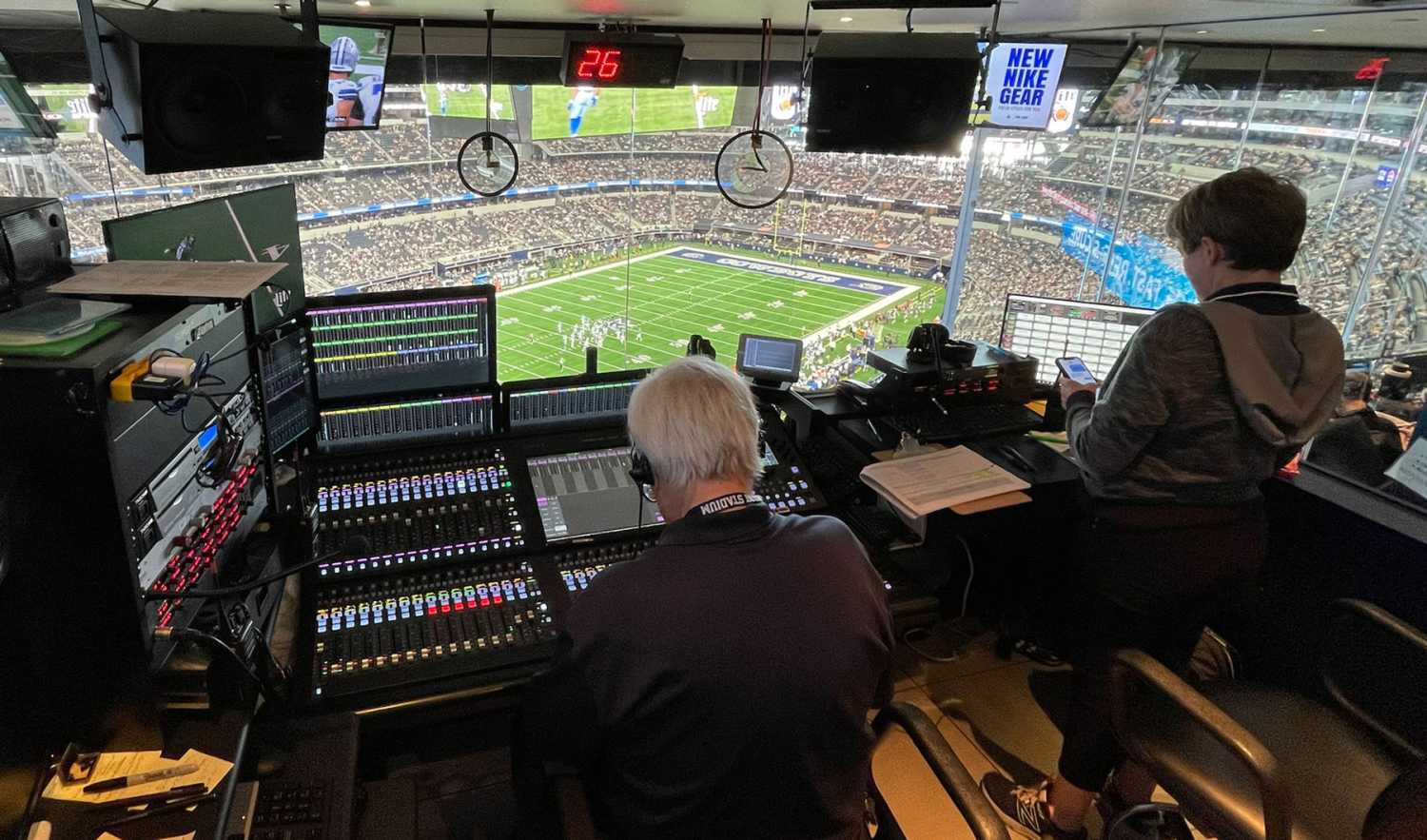AT&T Stadium upgrades with SSL System T
- Details

AT&T Stadium is in use 365 days a year, not just during football season, and the control room is the hub through which all audio signals pass for almost every event. “This room routes audio for the whole venue, to the bowl PA system, the X clubs, back-of-house, concessions and bathrooms, as well as broadcast feeds - you name it, we route it through here,” says Gary French, head of audio for the Dallas Cowboys.
The new SSL S500m console is custom-configured with 48 faders in a 2.5-bay frame. French has set up three metering displays, one for inputs, one for outputs and a third, utility screen for mix-minus feeds and various other signals. French says that the upgrade became necessary because he needed something more up-to-date, with far greater flexibility and with the capacity to handle many more inputs and especially outputs than the previous console, which was installed in 2009 when the stadium opened.
“Gary had an SSL background from his previous TV post days,” says Mike Mason, regional vice-president, Clair Global Integration. “So he knew their platform and the quality and the history of SSL. He made the decision regarding what brand and model of console he wanted and then turned it over to us. We figured out what parts and pieces were needed, supplied everything, then integrated it into the stadium’s systems.”
Mason continues: “We converted the whole control room to Dante from CobraNet.” Then, during the integration of the System T, “We added some AES3 connectivity in the room to integrate with existing equipment and Gary went from nine to 48 feeds to and from video. We added a Dante link to the truck dock; SSL provided an HC Bridge SRC for Dante conversion. Now, Gary's got a full 256 channels of Dante that he can send to and receive from the broadcast dock.”
The external truck network is siloed from the facility's Dante network, he adds: “Gary has control of all of his Dante channels but nobody else can see those signals. More importantly, they can't mess each other up.” In a separate project, Mason adds, Pro Media also updated the DSP managing the stadium P.A. “So they are now native Dante from the SSL console straight into the DSP.”
During a football game, French says: “We've got a lot of elements feeding into this room that are part of our show. We've got eight playback machines that we use during football games. Plus, I've got a couple of DJs in different parts of the stadium that feed me, and we've got mics down on the field for the national anthem and various presentations on the field.” Pre-game, French receives submixes of the hosts on the Cowboy’s game day set as well as from two shows on the stadium plazas and from pianos and singers on platforms in the endzones.
His primary mix is typically for the seating bowl and the in-house TVs in the stadium’s clubs, with a copy feeding the recorders. He will also provide separate mixes for sponsors: “Every sponsor wants their own ISO split of the show of their product being shown, to record.” He also trades signals back and forth with the broadcast trucks: “I send them my PA mix, other announcer mics and whatever else they need, and they send me their field effects and send me a program mix.”
Outside of football games, French continues: “We average about four corporate events a day here. If we’ve got a bowl event, which could be a party, a conference or a trade show on the field, I will handle that. Sometimes we have a third party come in and I will send them feeds from the video playback and route it into our sound system or just feed into theirs. For concerts, they always bring in their own system. But this is the biggest room in the world and that fourth level seating is way up there, so they usually tie into our upper delay speakers, and we manage the delay and EQ during their show. That is routed directly into our speaker system and also feeds our suites.”
Monster truck events and Supercross motorcycle races may feature live streaming or delayed broadcasts, French says. “I will provide the mix for those, which will be my bowl mix plus a stereo mix with the net sounds and crowd that I don't put into my P.A. mix. I'll add truck sound effects; we've got mics around the stadium to pick that up. I switch my monitoring back and forth and make sure everybody's got the same basic mix, plus or minus effects.”












